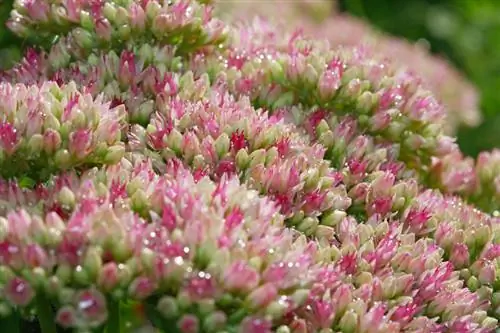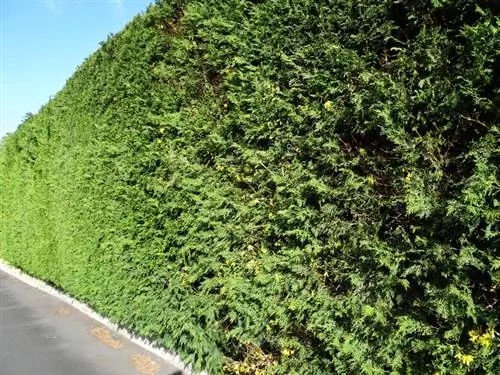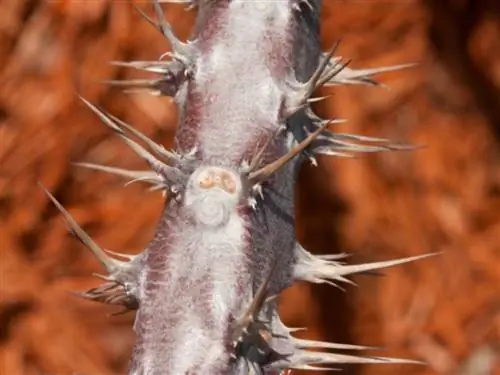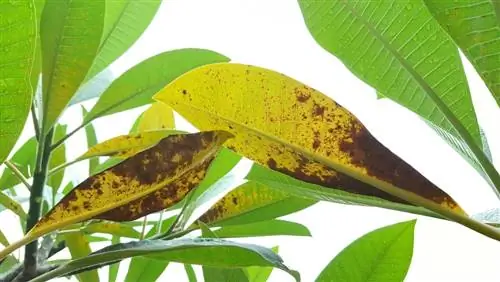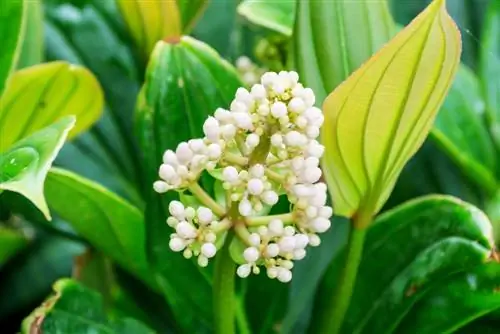- Author admin [email protected].
- Public 2023-12-16 16:46.
- Last modified 2025-01-23 11:20.
The sedum is actually a very robust plant that is not very susceptible to disease or pest infestation, although of course it is not completely immune to such attacks. Especially in unsuitable locations and/or incorrect care, damage can occur or the stonecrop (as the fat hen is sometimes also called) loses a lot of its resistance.
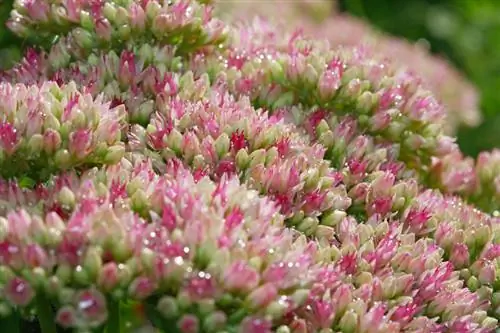
What diseases occur in sedum and how to treat them?
Sedum diseases include root rot caused by waterlogging, infestation by black weevil and powdery mildew. Countermeasures include drainage improvement, pest control through collection or nematode use, and mildew treatment as appropriate.
Dampness and root rot
The sedum is particularly sensitive to waterlogging; This leads to root rot and, over time, to the death of the entire plant. The root area is attacked by a rot-causing Phytophtora fungus. You can identify an infestation by symptoms like these:
- weak growth
- yellow or brown, drooping leaves
- dry / drying leaves
- reddish-colored, mushy roots
What helps against root rot?
When it comes to root rot, prevention is the best solution, which means you should definitely avoid waterlogging. This is done through sufficient drainage both in the garden soil and in potted plants, for example by loosening the substrate with sand or gravel. In the case of a light or incipient infestation, the plant can sometimes be saved by digging it up, cutting away the affected areas and moving the trimmed sedum to another, more suitable location (perhaps improved with sand). If the infestation is severe, the plant should be disposed of with household waste.
Danger from the black weevil
The black weevil, a mostly dark-colored weevil, and its larvae can also cause considerable damage to sedums. While the larvae feast on the roots, the adult animal particularly enjoys the fleshy leaves. There the black weevil also leaves behind the typical feeding marks. In the event of an infestation, you can take the following countermeasures:
- Collecting (placing a container filled with wood shavings under the plant)
- Use of nematodes (€11.00 on Amazon) (microscopic roundworms) to combat the larvae
- Relocating the plant and replacing the soil
Biological control using nematodes is particularly successful, although you should use the parasites between April and May and August to September if possible - the chances of success are highest at these times.
Tip
The sedum can also be affected by powdery mildew. The typical white fungal turf on the upper side of the leaf characterizes powdery mildew, also known as the “fair weather fungus”, which mainly occurs in hot and dry conditions.

